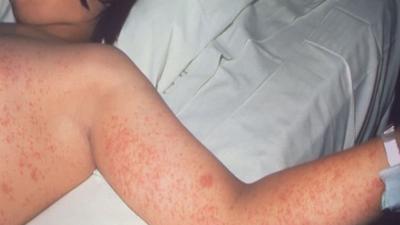LOUISVILLE, Ky. (WDRB) — Kentucky health officials announced Friday four additional cases of measles have been reported.
Health officials said three cases are from the same household in Woodford County. The fourth case, reported in Todd County, involves someone who was exposed to the virus while traveling internationally. None of the infected individuals were vaccinated.
Health officials are now working to find others who may have been exposed to those infected while they were contagious.
Six measles cases have been reported in Kentucky so far this year, with the addition of these new cases.
Nationwide, the U.S. Centers for Disease Control and Prevention reports there have been more than 1,200 measles cases this year, making this the largest measles outbreak in the country since the virus was declared eliminated in the U.S. in 2000.
The first 2025 measles case was reported in an adult in February.
Measles is a very contagious respiratory virus that can cause serious health problems, especially in youth children. The virus is spread through the air, where it remains for up to two hours.
Early symptoms of measles can begin 8-12 days after exposure, and include high fever, cough, running nose and red/watery eyes. A rash can form three to five days after symptoms begin, and beginning as flat, red spots on the face and spreading down. When the rash appears, fevers may spike, according to the CDC.
There is no treatment for measles, as doctors try to alleviate symptoms, prevent complications and keep patients comfortable.
Getting the measles vaccine
The measles vaccine is given in a combination with the mumps and rubella vaccines (MMR), and the first dose is given to children at age 12 months through 15 months. The second dose is given to children age 4 through 6. According to the CDC, two doses of the MMR vaccine is 97% effective against the measles virus.
Immunizations among Kentucky kindergarteners have declined recently. In a recent survey, only 86.9% of kindergarteners were fully vaccinated against measles, lower than the national average of 93%.
Indiana health officials report first measles case of 2025
Measles cases confirmed in Indiana, Kentucky amid low vaccination rates
Michigan announces second measles outbreak as US hits 1,227 cases














